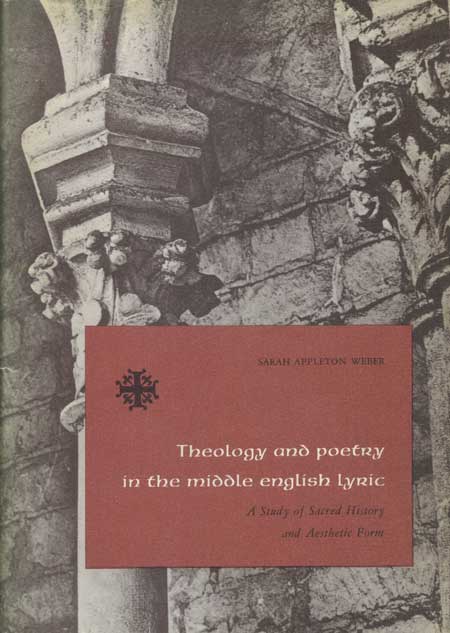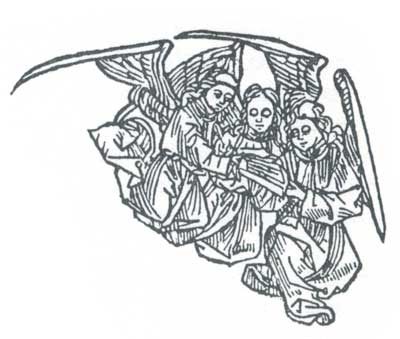| click here to read the full text of the book | leave / read comments and critiques of the book |

Theology and Poetry in the Middle English Lyric
A Study of Sacred History and Aesthetic Form
Sarah Appleton Weber
 In recent years scholars have shown the influence of Christian theology on the forms of medieval art, music, and drama. In this study Dr. Weber establishes the profound way in which medieval theology determined the aesthetic characteristics of the Middle English religious lyric. The theological basis of analysis is the liturgy, which not only provided the source and texture of the lyrics, but which was the foundation upon which medieval theology itself developed. The liturgy was fundamentally a sacred history that shaped the history of man from his birth to his death to the plan of redemption. The method of the liturgy’s formulation of the history of redemption provided certain dynamic forms and principles of proportion for the lyrics that evolved from it.
In recent years scholars have shown the influence of Christian theology on the forms of medieval art, music, and drama. In this study Dr. Weber establishes the profound way in which medieval theology determined the aesthetic characteristics of the Middle English religious lyric. The theological basis of analysis is the liturgy, which not only provided the source and texture of the lyrics, but which was the foundation upon which medieval theology itself developed. The liturgy was fundamentally a sacred history that shaped the history of man from his birth to his death to the plan of redemption. The method of the liturgy’s formulation of the history of redemption provided certain dynamic forms and principles of proportion for the lyrics that evolved from it.
By selecting several lyrics on each of the central events of the redemption—the annunciation and birth of Christ, the crucifixion and resurrection, Christ’s ascension and Mary’s assumption—and by analyzing them in the order celebrated by the liturgy, Dr. Weber has demonstrated that the aesthetic structure of each lyric can be found only by means of its specific theological subject and that the meaning and structure of a lyric on one event of sacred history can be fully grasped only in its total context of the other events of sacred history. The divine ration and symmetry of proportion within sacred history provides the principle of proportion within the poem. The subjective element in these Middle English lyrics also receives its ultimate definition in terms of the object sequence of events in sacred history. Poetry itself when it comes into relationship with medieval theology is not an autonomous art, but is assumed as part of the endeavor of the Christian soul into being a means by which he may reach eternal delight. Thus an aesthetic theory appropriate to the nature of the medieval religious lyric, including the lyrics composed in the ancient classical tradition, can be formed only when beauty is defined in its relationship to the Eternal Art.
Sarah Appleton Weber, a medievalist, has taught on the English faculties of The Ohio State University and Smith College. She has published her own poetry and served as poetry editor for Literature East & West, the journal of the Conference on Oriental-Western Literary Relations of the Modern Language Association.
| 1969 292 pp. | This title is no longer available in a traditional print edition. Click here for free access to the book's full text. |

